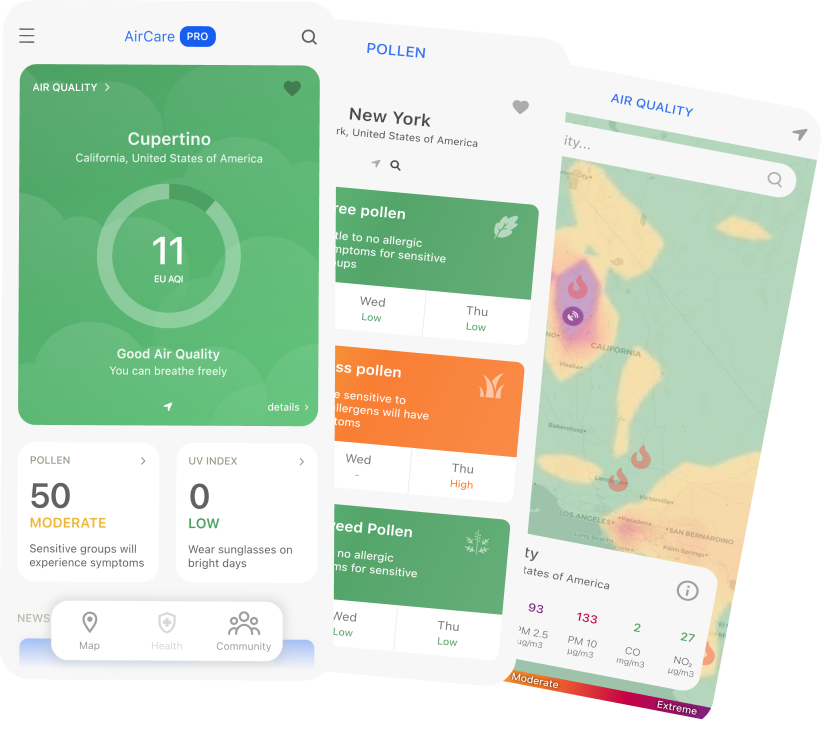At first glance, PM10 might seem like a straightforward and simple concept – just tiny particles of solid or liquid floating in the air. However, PM10 is much more complex than it appears and has significant impacts on human health.
This article aims to delve deeper into the topic of PM10 and its effects on health. We will examine the sources of PM10, the mechanisms by which it impacts our health, and what we can do to reduce exposure to these harmful particles.
By the end of this article, you will have a much better understanding of PM10 and the importance of addressing this issue.

What Are PM10 Particles?
PM10 refers to particles that have a diameter of 10 micrometers or smaller. Particulate matter is oftentimes referred to as aerosols or floating dust. Its small size allows it to penetrate deep into the respiratory system.
The Difference Between PM10 and PM2.5
PM10 and PM2.5 are different in size. While PM2.5 is a very fine particle, PM10 is a larger particle. This lowers the chance of PM2.5 particles crossing from the lungs into the bloodstream. Nevertheless, these particles can still enter the lungs.
Sources of PM10
PM10 is formed when gases emitted from industries and motor vehicles go through chemical reactions in the atmosphere. Some common sources of PM10 include:
- Industrial sources
- Energy generation via burning coal
- Brush/waste burning
- Wildfires
- Dust from agriculture, landfills, and construction sites
- Wind blowing dust from deserts
When it comes to indoor particle pollution, it can come from tobacco smoke, fireplaces, as well as stoves or space heaters operating on wood.
Health Effects of PM10
Even though PM10 is larger than PM2.5, it is still quite small. When compared to the width of human hair, it is only one-tenth of it.
Inhaling these particles will trigger allergic reactions, and irritate your throat tissue and nose. Once the particles enter your lungs, they can cause an asthma attack. They irritate the airways, making them tighten up and swell, and cause breathing problems.
Some other health effects of PM10 include:
- Bronchitis
- Reduced lung development
- Stroke, high blood pressure, and heart attack
- Increased risk of lung cancer
- Premature death
How to Protect Yourself
PM10 is a major health concern for everyone. However, there are some things you can do to protect yourself.
We would recommend always checking the air quality outside using AirCare. . When pollution levels are high, avoid going outdoors and keep your windows and doors closed.
On polluted days, avoid outdoor exercise and put on a pollution mask (FFP2, NP5). Even if they aren’t 100% effective, they still significantly decrease the amount of particle pollution you’re inhaling.
When it comes to indoor pollution, an air purifier is a great option. Air purifiers work by using filters, such as HEPA filters, that trap and remove PM10 particles. By removing PM10 from the air, air purifiers can help to reduce the health risks associated with exposure to these particles, particularly for people with respiratory and cardiovascular problems. If you are using wood to heat indoors, consider switching to an electrical solution that does not emit PM10 particles.
Final Thoughts
PM10 is a highly impactful and prevalent air pollutant around the world. Even though it differs greatly in its concentration depending on the country, it still has a significant impact on public health.
It is important to continue monitoring levels of PM10 and taking measures to reduce exposure to it to protect our health. This can be done through a combination of individual actions, such as reducing the use of fossil fuels, and government policies aimed at improving air quality and reducing emissions from industries.
Ultimately, addressing the issue of PM10 requires a collective effort from individuals, governments, and businesses, and will require continued monitoring and research to ensure that effective solutions are developed and implemented.
Do you want to know the quality of the air you breathe? Download AirCare – our free mobile app that tracks air pollution from your pocket, and check out the AirCare blog!





